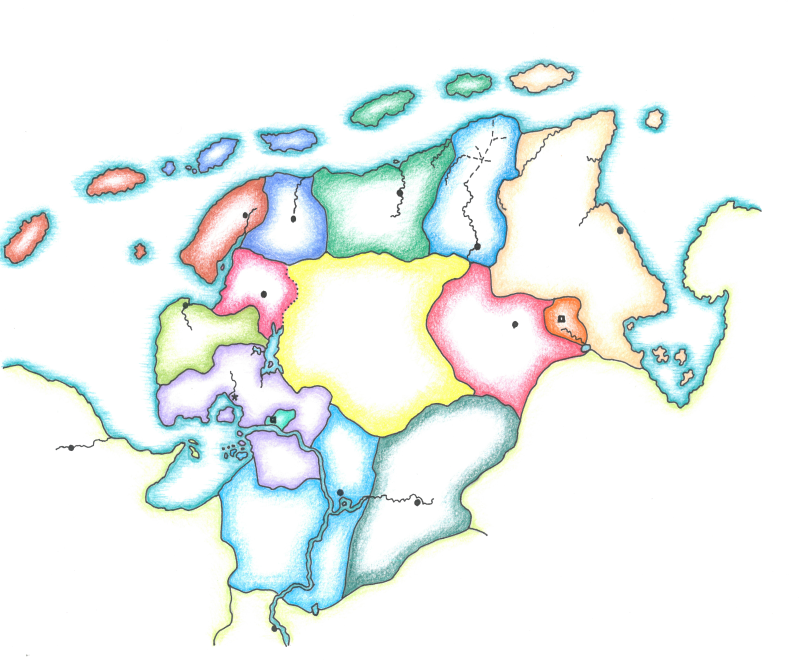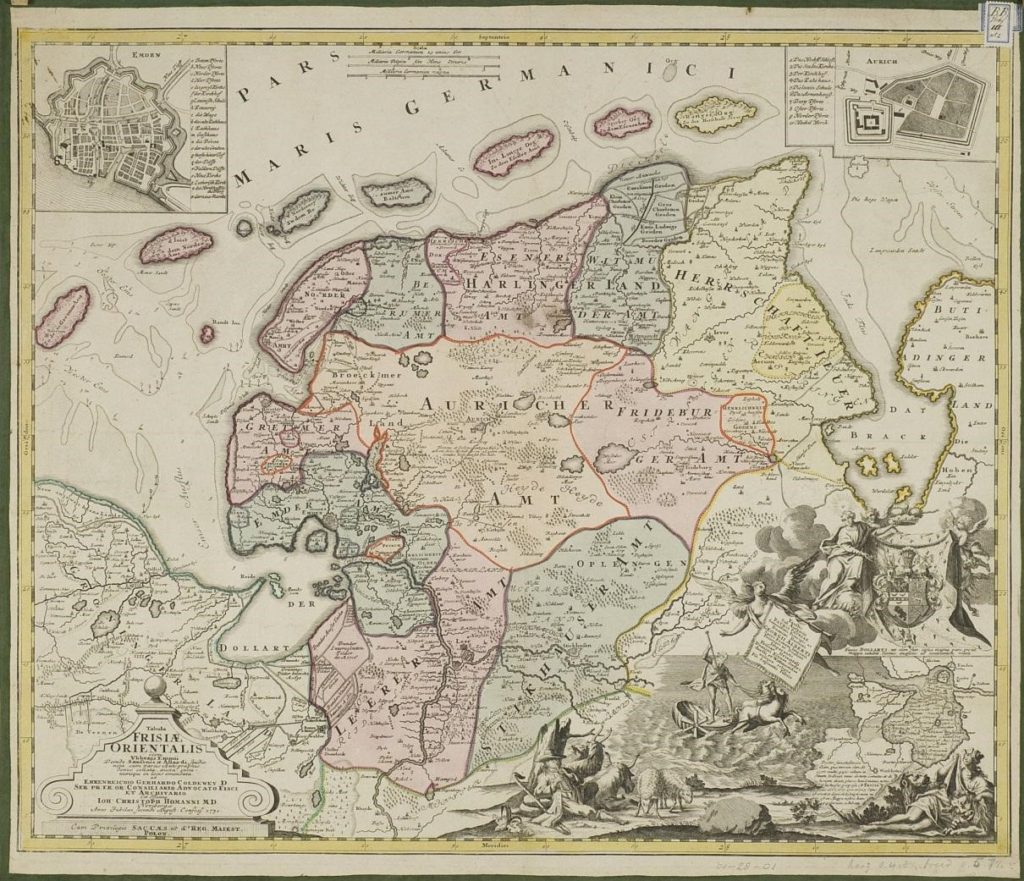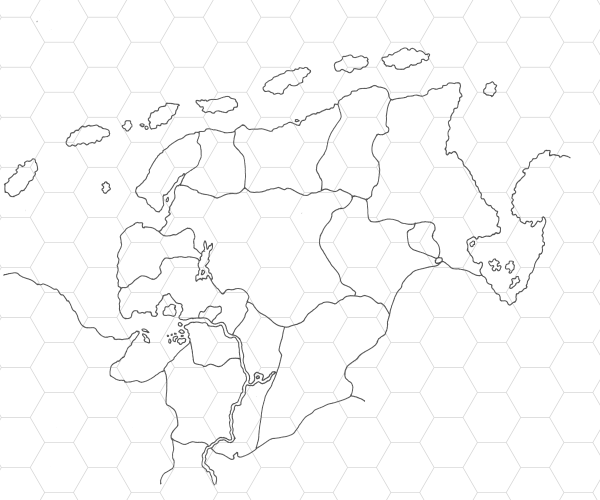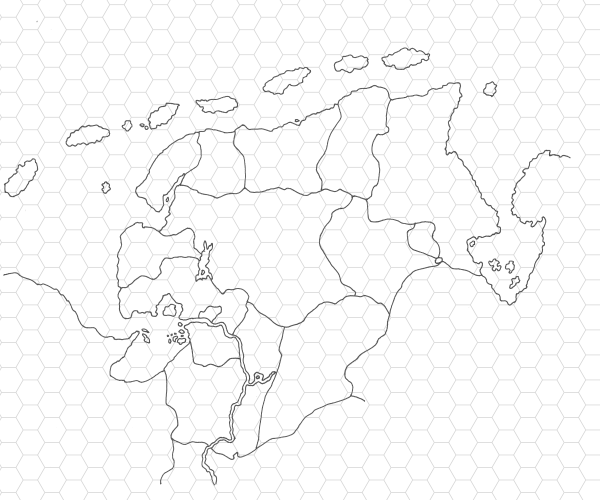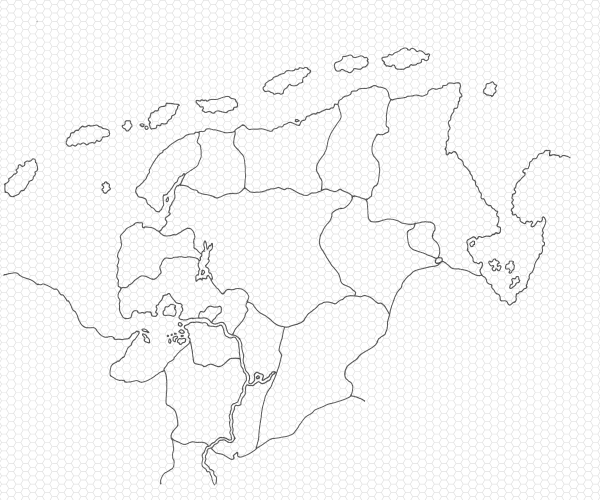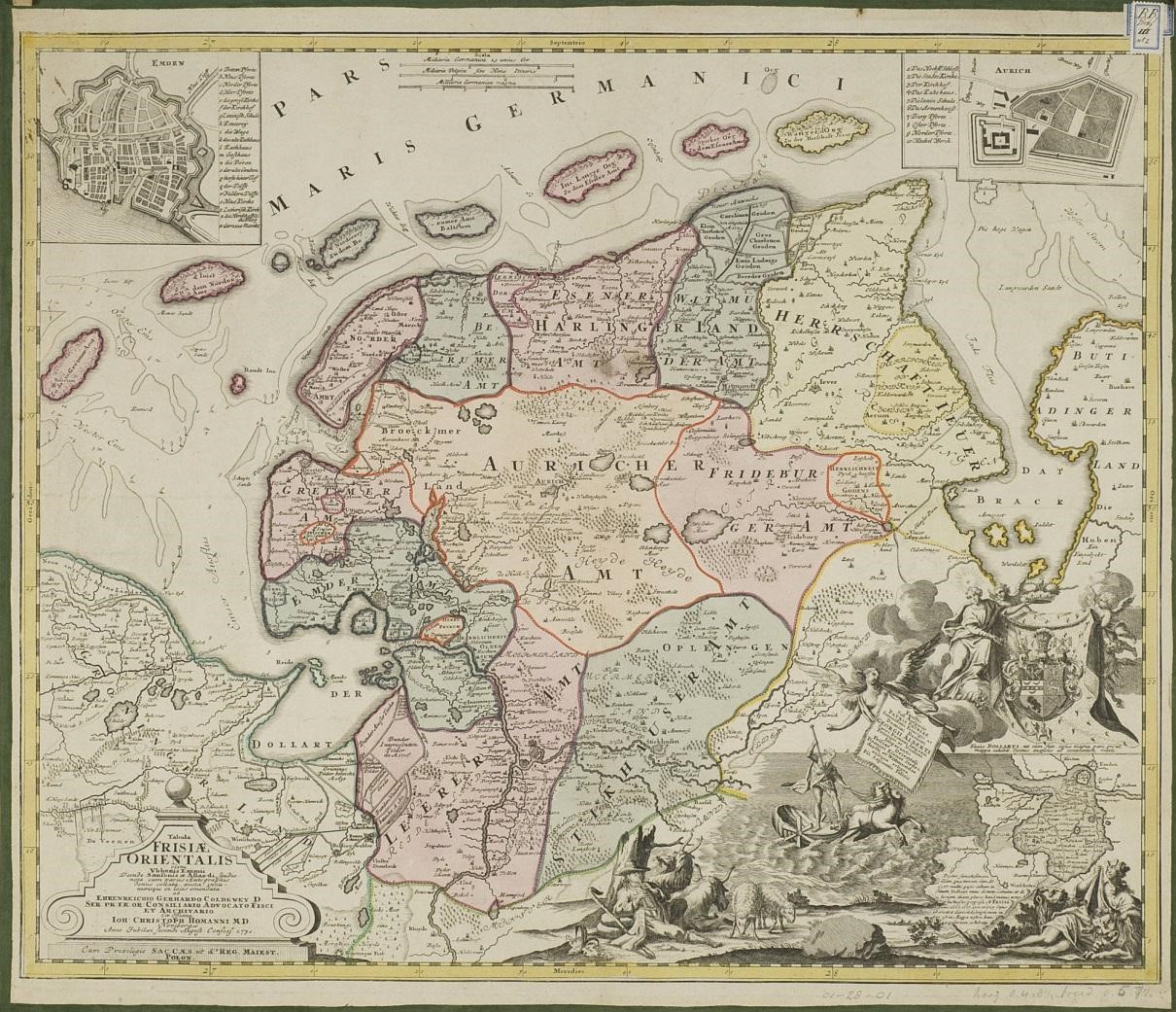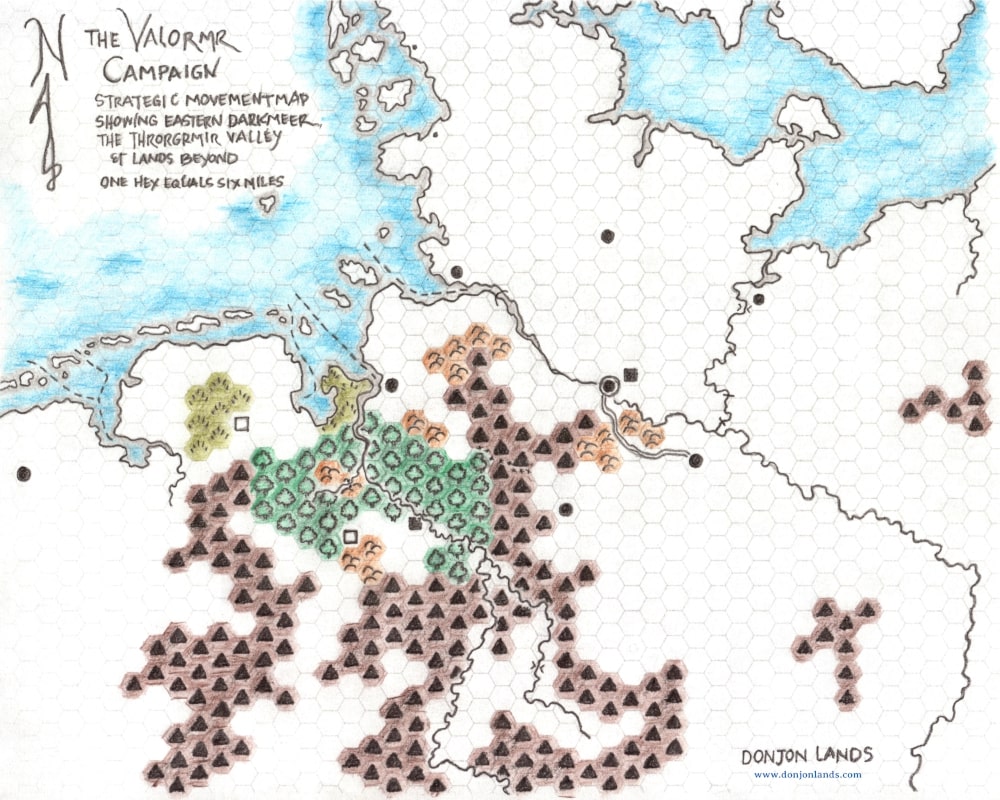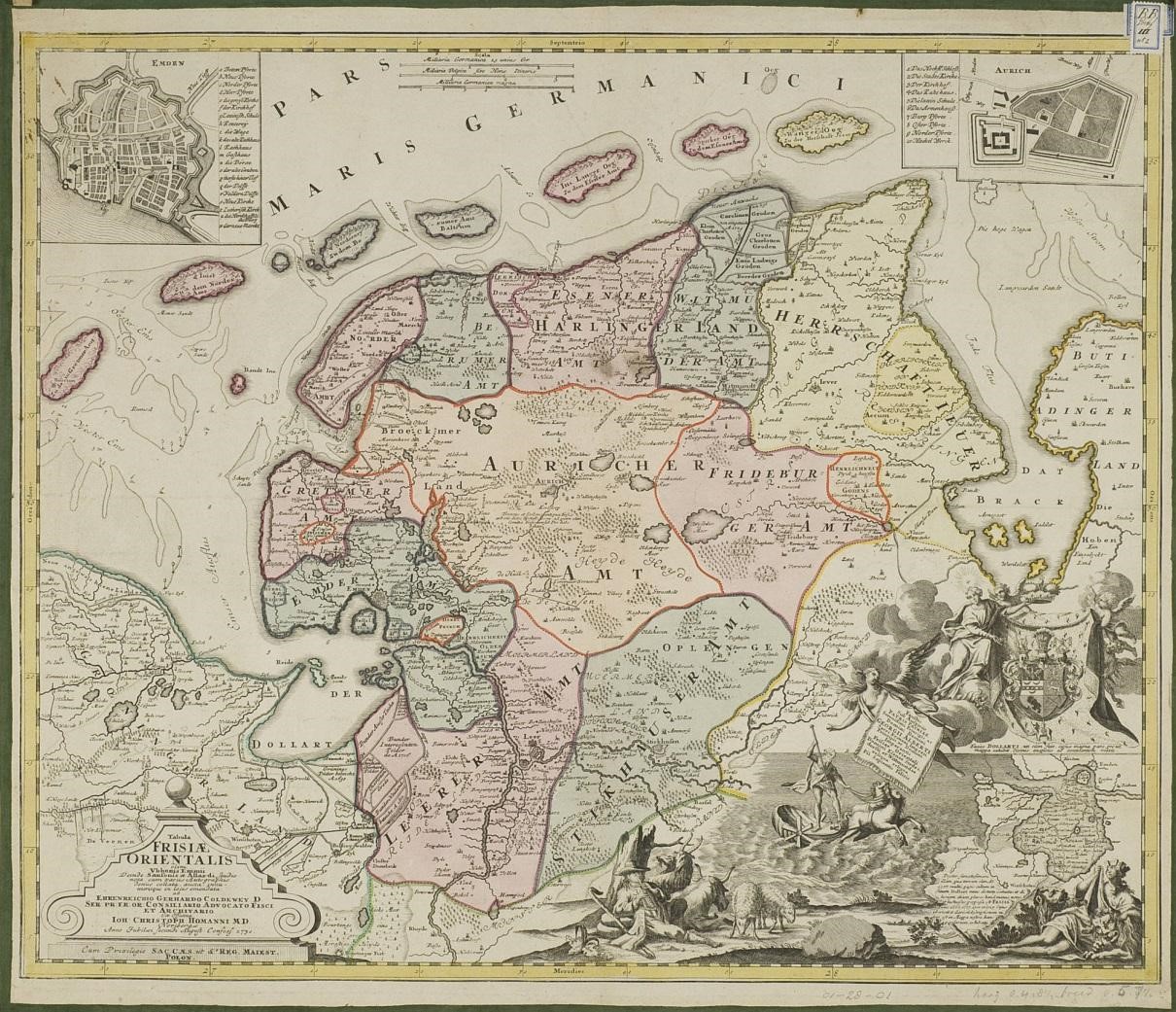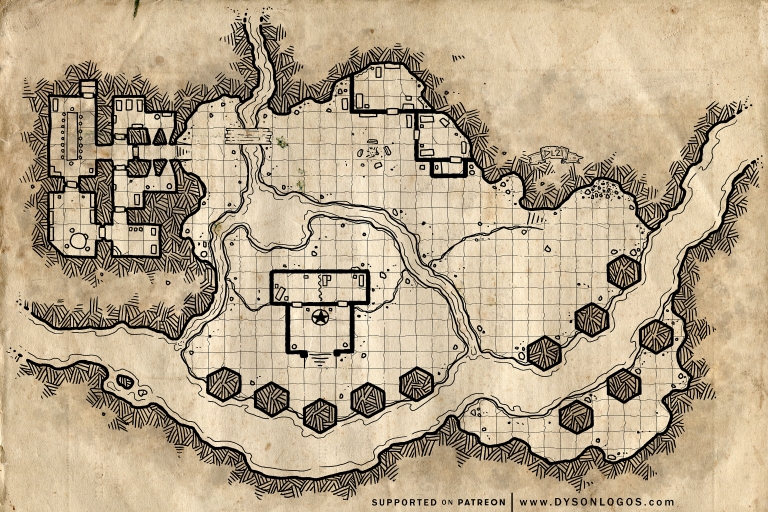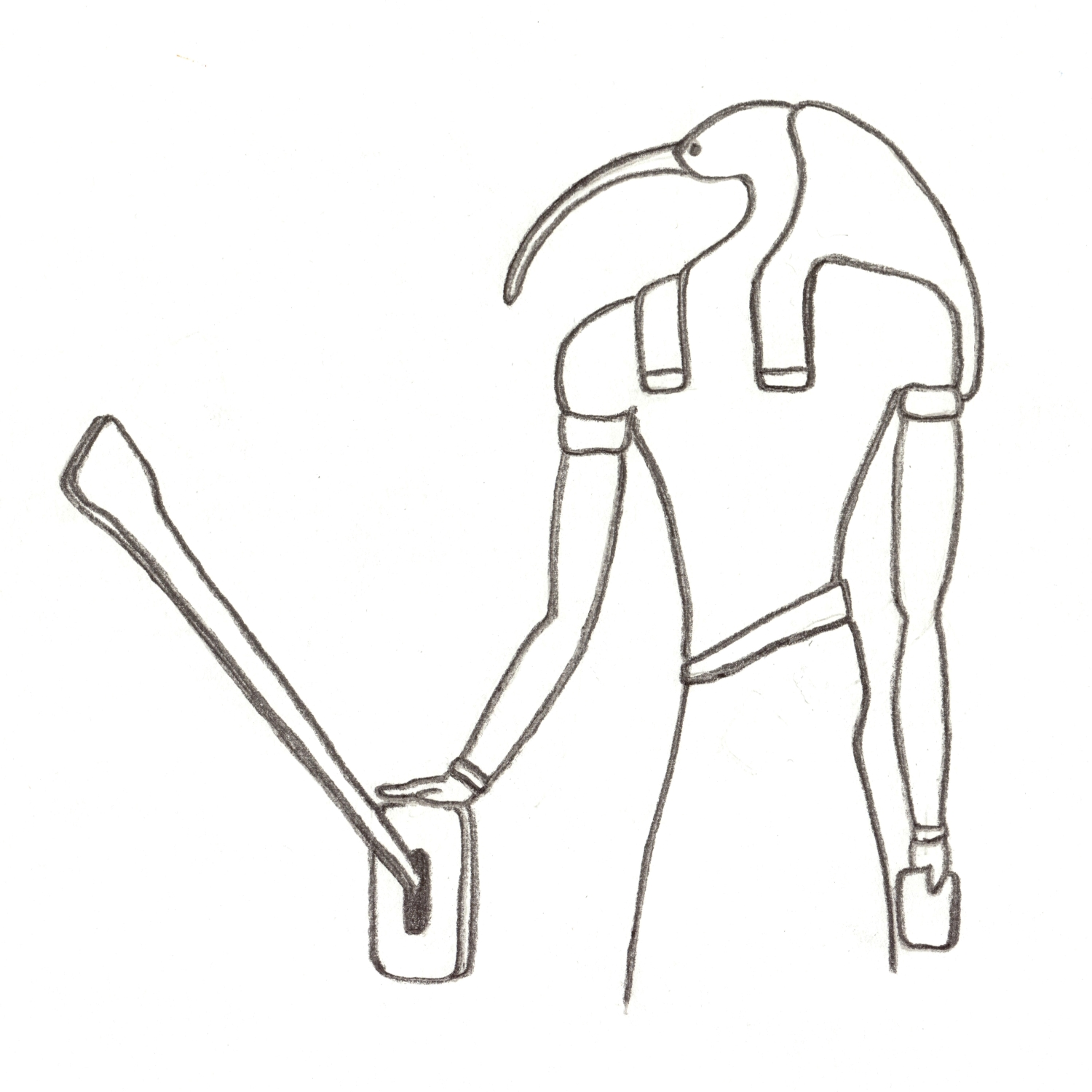Monstrous Denizens of the Pale Moor
Reading Map
This is the fifth article of a short series outlining a B/X D&D campaign.
- Atlantis of the Clay
- Warlock of the Pale Moor
- A Forsaken Peninsula
- Thirteen Graves
- Monstrous Denizens of the Pale Moor
- Beyond the Pale
- The Hex Lands
After determining human-controlled areas, it may seem little space remains for monsters. But the interior is wild and infested with ferocious beasts, walking dead, and tribes of chaotic humanoids. Surrounding the Thirteen Graves are the sea and three territories. Being borderlands, these last are wilderness areas, whose inhabitants may encroach upon civilized lands.
Secrets and Names
I debate with myself about disclosing the secrets I come up with or letting the DM make his own secrets. On the one hand, publishing them here gives them away should players become overly curious. On the other, I’m likely to build on some of the secrets in later articles. The reader must be in the know. Of course, the DM may change the secrets or devise others. I have added one secret each to “A Forsaken Peninsula” and “Thirteen Graves.” The debate continues.
I have also resisted putting names on the map, thinking to leave that to the DM as well. But place names are useful in writing as references. “The county that claims the Pale Moor” is wordy as well as awkward. I’ve written on the map a few names used in the text.
E. PLACE AREAS UNDER NON-HUMAN CONTROL.
I mention PC races at the end. Otherwise, monsters are divided by geography:
Not all monsters described are shown on the map.
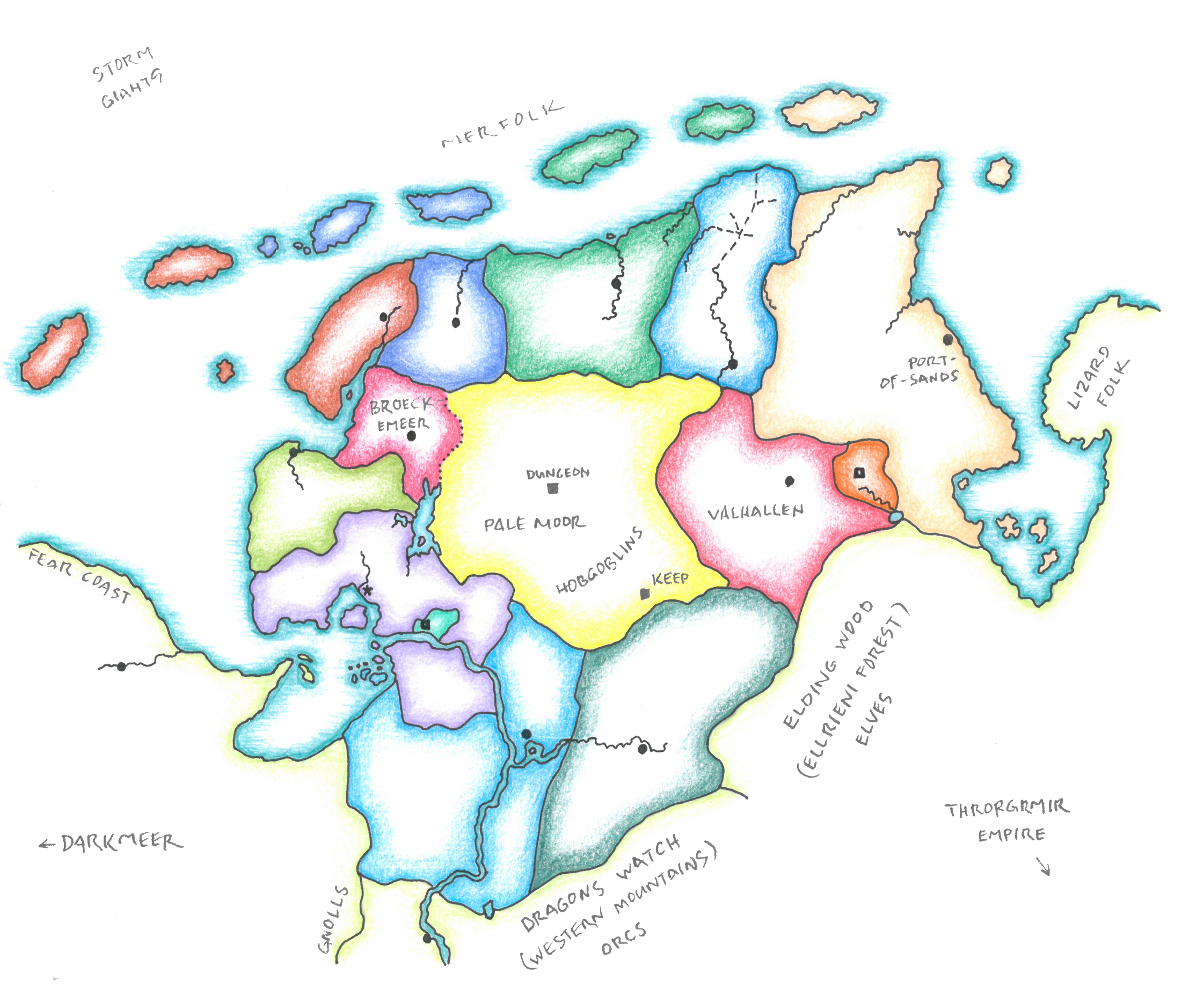
Pale Moor
Troglodytes (not shown on map): Native inhabitants of the peninsula, the troglodytes were pushed out by human settlers. Remnants of their caves, found throughout the region, testify to their former territory. Restricted now to the interior, they often raid human settlements out of necessity if not revenge.
Kobolds (not shown): The dog-men infest the Pale Moor. They shelter in any dense thicket or tangled copse of trees.
Goblins (not shown): Goblins seek uninhabited troglodyte caves in which to make their lairs. They may be encountered most anywhere on the Pale Moor.
Hobgoblins: Inhabiting the Pale Moor’s southeast, hobgoblins frequently raid the southern graves all the way to the Gruttemar, the lake shown on the moor’s western border. To augment its army, Valhallan enlists hobgoblins, goblins, and bugbears. Parties crossing the grave’s perimeter are likely to encounter these goblinoids in border patrols.
Moor Wraiths: The result of the Pale Moor curse, these undead creatures plague the interior. Their appearance is much like a zombie: bloodless corpse, pallid complexion. Despite a vacant stare, they seem to act in concert and with a will.
Pale Moor Curse
Any creature that dies within the confines of the Pale Moor becomes a moor wraith within one day. Denizens adapt to this situation by burning their dead in impromptu ceremonies.
Secret #5: When the Battle of Throrgrmir was lost, remnants of the Chaos Armies disbanded. The Wraithwright, having arrived at the head of his undead legion near the battle’s end, still commanded the entire force. He withdrew into the Pale Moor. It is the Wraithwright who laid the curse upon the land. And it is the Wraithwright to whom the animated dead are enthralled.
New Monster: Moor Wraith
The Pale Moor curse acts as an animate dead spell, except a moor wraith has two more hit dice than the original creature. Rumors imply a moor wraith may gain additional hit dice.
Skeletal moor wraiths also exist, though they are less common. A so called “bone wraith” is created when a skeleton is brought into the moor or when the flesh of the recent dead is boiled. Bone wraiths have one more hit dice than the original creature.
Whether skeletal or fleshed, both are wraith-like in that they can only be hit with silvered or magical weapons. Moor wraiths do not drain energy levels.
Clerics turn a moor wraith as a wight or the undead creature with equivalent hit dice. A moor wraith may be dispelled. For purposes of spell failure, treat the curse as a 12th-level magic-user.
All moor wraiths act according to the desires of the Wraithwright.
Infernal Hordes: Though infrequent, demons and devils may be encountered on the Pale Moor. Hordes of these infernal creatures sometimes ravage the land, crossing into the graves to wreak havoc among the mortals.
Demons and Devils and Alignments
By adding demons and devils to a B/X game, we’re creating work for the DM. We can rob from AD&D, which is what I did in the ’80s. The biggest question lies in alignments. For me, demons and devils are distinguished by their cultures, which are tied to their alignments: havoc-wreaking demons versus Machiavellian devils. The one chaotic, the other lawful, both evil.
In a three-point, single-axis system, demons are aligned with chaos, clearly. But devils with law? Do we call them chaotic with their organized society? Or should we introduce a dual-axis alignment system?
Holmes’s five alignments are enough. DMs may decide for themselves. If incorporating more alignments, we might throw out alignment languages or restrict them to the three original alignments of the first axis. I’m thinking to experiment with only two languages: Law and Chaos.
Surrounding Lands
Lizard Men: Prowling the swamps east of the Jade Bight, the lizard men cross the bay on dark nights to raid coastal villages. They also harass shipping in and out of Port-of-Sands.
Orcs: Broeckemeer incites the orcs of the Dragons Watch Mountains to raid the southern graves. Because the orcs are unruly, the raids are infrequent, untimely, and therefore ineffective.
Gnolls: Several bands of gnolls range south along the west flank of the Dragons Watch. Broeckemeer is in contact with the gnolls, hoping to recruit them into an army when diplomatic contention comes to military conflict with the duchy. For the time being, though, the gnolls want nothing to do with the Pale Moor and its curse.
Secret #6: Broeckemeer, whose ruling family is made up of witches and warlocks (secret #4), endeavors to call upon the demon lord of gnolls to bring the rapacious bands under their dominion.
Nomads (not shown): While avoiding the Pale Moor, the Sadhakarani [introduced in Wyrm Dawn] wander throughout the peninsula and beyond, trading goods from remote lands. Also called Runefolk, they have an innate ability for magic-use.
Dragons
The Wyrm Prophecy yet unfulfilled, any number of dragons might lair on the peninsula, keeping watch over events in Throrgrmir. The most powerful among them are a black and a green (not shown). The black dragon lairs on the Moor. The green, at the edge of the Elding.
Northern Sea
Mermen: This submarine folk inhabits the deeper waters off the north coasts of the island chain. They keep to themselves and are rarely seen by fishermen and sailors.
Storm Giants: A clan of storm giants resides in a submarine castle, built from coral and giant mollusk shells. They are potential allies of law.
Secret #7: The cause of the Atlantean flood was not divine but giant. The storm giants and the knightly order were working together against chaos. I don’t know yet what was the transgression, but the order’s hierarchy crossed the storm giants in some manner. The giants’ retribution was swift, and the knightly order all but washed away.
Buccaneers and Pirates (not shown): There is a long tradition of piracy in the Northern Sea. From bases along the Fear Coast, pirates ply the channels that give access to ports in the bays either side of the peninsula. Though it is no longer a pirate holding, when referring to Thror’s Gate (off map, east, see Valormr: Pre-War Disposition of Forces), the pirates still call it Skullhaven. Broeckemeer is a reputed sponsor of pirate activity.
PC Races
Halflings: The Forsaken Peninsula is no place for such gentle people. The few haffolk who dwell here migrated with the humans from the Shire Hollows in the Throrgrmir Valley. They settle in small shires near human settlements in the lawful lands.
Elves: Any elves are from the Ellriendi Forest (Elding, Grunnthraesir, or Groennendr) also in the Throrgrmir Valley.
Dwarves: Dwarves come from either of two clans of Forn Fjallaheim in the Dragons Watch Mountains a few days march south. One clan is the Galti-Gler, the other not yet named.
